As the print industry has evolved, technology has played an increasingly more important part. From using computers to design the work to some of the most sophisticated printers in the world producing perfect reproduction on plastic, metal, wood and beyond.
Obviously demand is a big driver behind innovation but that innovation has to come from somewhere.
Engineers, whatever their specialism, are a very unique, very bright community of experts whose sole purpose is to solve problems.

We’re not entirely dissimilar insofar as we do our best to solve problems too but what can we learn from our technically minded peers?
THEY LOOK AT THE PROBLEM FROM ALL ANGLES
We’ve already discussed that printers and engineers perform a service that’s fundamentally similar. The one significant difference comes from the more diagnostic approach of an engineer.
An engineer doesn’t just blindly follow the instructions of a client. An engineer will be provided with an intended end goal, and it’s up to the engineer to provide a solution to meet the client’s requests in the most effective way.
You might be led to believe that an industrial printer just produces prints when it’s asked to do so. You might also be led to believe that the individual printers don’t take the time to truly understand the problem and requirements of the client before collaboratively providing a solution.
IT’S ALL ABOUT PROCESSES
Engineering is very much process-driven. You know those flowcharts that you’re frequently asked to hang on your walls for every employee to absorb and act upon? Those processes.
This just so happens to tie in very nicely with our previous point about starting with the end goal.
Effective processes are, ultimately, linear. Any processes that are non-linear are either convoluted, confused or should simply be broken down further.
It’s important for both modern printers and customers to adopt this method of thinking.
AN EXAMPLE
Let’s imagine you operate a law firm that handles huge amounts of confidential information and operates across multiple sites in the UK. You’re looking to implement a secure server network and failsafe backup system for all of your data.
The extent of your knowledge doesn’t go much further than your end goal. You know a few bits of terminology from a few late nights spent reading blogs and articles – but even then, you only know how to say the words and can’t really use them in any sort of context.
You hire a team to implement this for you. What are you not going to do? Tell them how to do their job.
A team of engineers is hired for a job to design a process to deliver a solution for a problem provided by a client.
This is the exact type of working arrangements that a printer should have with its clients.
FINAL THOUGHTS
Printers must work collaboratively with each other and with its clients, developing systems and processes to truly understand the requirements of the client and to deliver consistent and effective solutions.
It’s true – the same can be said for most industries. We even said it ourselves at the beginning of the article. All this does is reinstate our point that engineers have got it just right. The engineering sector is something that we should all look to for inspiration.
“Successful engineering is all about understanding how things break or fail.”
What engineers are able to do is understand how things fail and then develop systems to avoid it. If you know how things fail, you will never fail.


